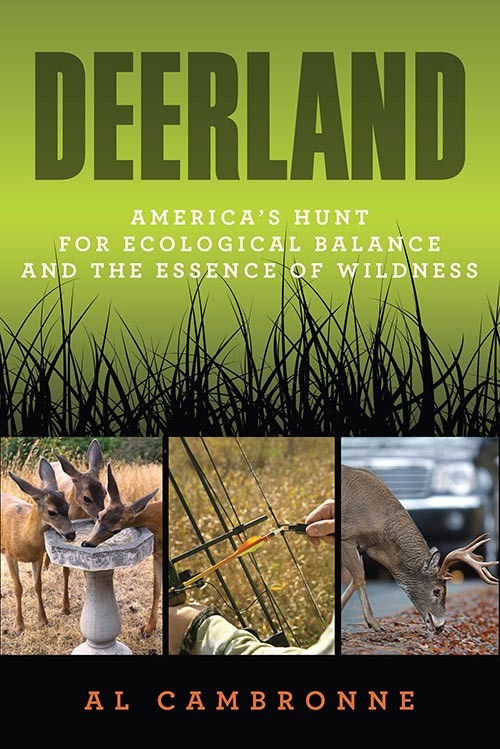
| Amazon
by Al Cambronne
Globe Pequot Press, 2013
Back when I was a boy, despite the fact that my father wasn’t a deer hunter, I’d always know when it was deer season. Even though we lived in a town where the largest industry was commercial fishing, a fair number of people were either duck or deer hunters (sometimes both). Thus, every deer season, cars could occasionally be seen driving down the main street of the town in which we lived with a recently shot buck or doe tied securely across the hood, roof, or trunk; cars that in some cases were headed toward the grocery store where my uncle worked as the butcher, and where he would neatly and quickly transform one large animal into several dozen small, white-paper-wrapped parcels ready to be put into a freezer.
No one we knew would have found any of this odd; it was just one of the many facets of ordinary life in our little town – just as it was in little towns all across the country. All this, of course, was prior to the rise of the “Deer Industrial Complex.”
The Deer Industrial Complex is a phrase I very much wish I had coined myself to describe the bewildering array of businesses and government agencies that now surround the lives of deer in the United States. From their well-being, to the ways in which they are hunted, to the production and sale of the myriad items of equipment used to hunt or watch them, the Deer Industrial Complex affects everything deer related in the country.
Al Cambronne, the author who created this perfectly descriptive phrase, recently published a book called Deerland: America’s Hunt for Ecological Balance and the Essence of Wildness. Regardless of whether you are a deer hunter, an anti-hunter, a naturalist, conservationist, environmentalist, or some mix of more than one of these, Deerland should be considered a must read. Never before in the known history of the land now encompassed by the boundaries of the U.S. have there been so many white-tailed deer; quite an ironic thing to state considering that little more than a century ago there were well-founded concerns that the species would become extinct.
Cambronne covers how many deer there are in the U.S., where they live, how they are managed, and what proportion of them will annually meet their earlier-than-natural demise. Interweaving a wealth of information about the biology, life, and natural histories of deer with the results of his investigations, Cambronne illuminates relationships between the deer, the land, and human beings.
At times funny, often eye-opening, occasionally nauseating (let’s just say that after the section discussing the annual national sales of deer urine – yes, deer urine – you’ll likely never look at an Olympic-sized swimming pool quite the same way again), Deerland is a book that should at the very least be read by all those whose lives its subject touches.

